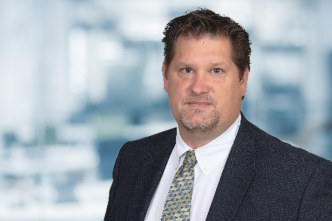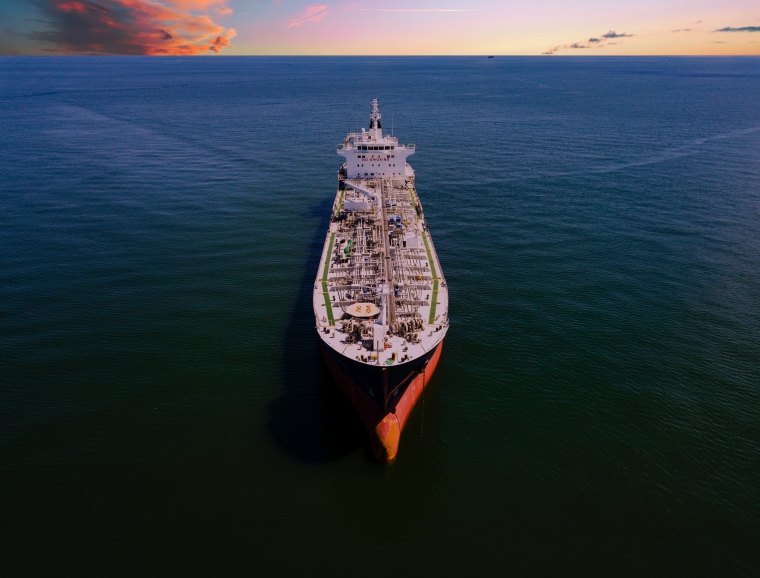 Dr. Jeff Wakefield, SWCA Natural Resources Technical Director
Dr. Jeff Wakefield, SWCA Natural Resources Technical DirectorWith SWCA’s growth this year, we now bring a wealth of expertise in Natural Resource Damage Assessments (NRDA), natural resource economics, and strategic environmental spill response management to our clients across the country. We sat down recently with Dr. Jeff Wakefield, a Natural Resources Technical Director in our Philadelphia office, to learn more about this growing sector and what it means for SWCA’s clients.
WIRE: Dr. Wakefield, what is NRDA?
DR. WAKEFIELD: NRDA stands for Natural Resource Damage Assessment, which is a legal process built around two laws: the Comprehensive Environmental Response, Compensation, and Liability Act of 1980 (CERCLA) and the Oil Pollution Act of 1990 (OPA). While the process can be complex, the idea is simple. Suppose there’s an oil spill, and it takes three months to clean up an oiled shoreline. Then it’s another 21 months before all the ecological functions of that shoreline return to normal. That’s a 24-month period when the shoreline is not providing the services it should. The company responsible for the spill might compensate for those lost services by restoring a nearby shoreline that has been adversely changed by erosion. The NRDA process identifies the right amount of restoration: not too much, not too little.

WIRE: Is the NRDA process different from the emergency response?
DR. WAKEFIELD: Yes, it is. Although SWCA staff are often involved in both phases, the initial response and the assessment that follows are two different challenges. Many state and federal agencies and jurisdictions are often involved in an emergency response. Think of a storage tank leaking oil into the ocean: the National Oceanic and Atmospheric Administration becomes involved due to the impact on the ocean; the National Park Service becomes involved if the oil washes onto a national seashore; and the U.S. Fish and Wildlife Service and state wildlife agencies may become involved if birds walk through the oil on the shoreline.
In a case like this, a standard framework (the incident command system) ensures that everyone supporting an emergency response is rowing in the same direction. Within this system, there is a group focused on the environmental impact and responsible for designing and implementing programs that gather environmental data and use those data to help develop response strategies. That’s where our team fits in.
At the same time—and sometimes continuing for years after—there is a NRDA process going on. Most of our work in this area does not occur in a courtroom and there are no judges. It is groups of scientists and economists working to a) understand what actually happened during and after the oil spill and b) determine the amount of ecological restoration that would compensate for the ecological losses.
WIRE: How do you gather accurate data for restoration and compensation?
DR. WAKEFIELD: Spills can happen in the blink of an eye, and you wouldn’t believe how fast the response process comes to life. Our experts are most effective when they arrive early in the emergency response process; it is much easier to start the response on the right foot than to try and overcome data challenges later. SWCA response teams work to collect the observations needed to conduct a NRDA later and do so in a way that will stand up in court if need be. It is critical to capture all the necessary information at this phase of the response before ephemeral data like the extent of an oil spill or the number of species impacted is lost or forgotten.
As I mentioned, the NRDA process typically starts in tandem with the emergency response, but it really ramps up as the emergency response part winds down, sometimes weeks, months, or even years after an incident. Our role is to arrive as early in the emergency response process as possible and collect the information that will likely be critical to the NRDA once the assessment begins. This way our clients are not left trying to piece together information from a half-written report or recollection.
When we have good data to rely on, it’s usually easy to work together with agency scientists to efficiently reach logical conclusions. When we don’t have that information, it is much more difficult. Either way, once we are engaged, we stick with our clients throughout the entire process.
 Whiskey Island before (top) and after (bottom) restoration. SWCA, as a subconsultant to Coastal Engineering and Consultants, performed on-site inspection services for the entire Caillou Lake Headlands (Whiskey Island) Restoration Project in Terrebonne Parish, Louisiana. Funded by a disaster response settlement, the project is one of the largest coastal restoration projects in Louisiana’s history. Whiskey Island is part of a chain of barrier islands that are the front-line protection against coastal erosion but faces a great amount of erosion itself. The team constructed 600 to 800 feet of beach, which includes a back beach, dune, and front beach, and constructed approximately 500 feet of marsh area on the western end of the island.
Whiskey Island before (top) and after (bottom) restoration. SWCA, as a subconsultant to Coastal Engineering and Consultants, performed on-site inspection services for the entire Caillou Lake Headlands (Whiskey Island) Restoration Project in Terrebonne Parish, Louisiana. Funded by a disaster response settlement, the project is one of the largest coastal restoration projects in Louisiana’s history. Whiskey Island is part of a chain of barrier islands that are the front-line protection against coastal erosion but faces a great amount of erosion itself. The team constructed 600 to 800 feet of beach, which includes a back beach, dune, and front beach, and constructed approximately 500 feet of marsh area on the western end of the island.
WIRE: Collecting data from large tracts of land sounds time consuming. Do you use technology to help in the collection?
DR. WAKEFIELD: Yes, all the time. Let’s use wetlands as an example. One question that often comes up in Oil Pollution Act NRDAs is how the spill affected wetlands. That is a very difficult question to answer if hundreds of wetland acres may have been affected and yet the information you have comes from only a handful of 1-square-meter study sites. In the late 1990s and early 2000s, our clients spent a lot of money adding 1-square-meter study sites so that NRDA participants would not need to spend a lot of time disagreeing about what happened in the unsampled areas.
We don’t collect as much data from 1-square-meter study sites today, but, because we can supplement those data with high-resolution drone and satellite imagery, our results are much more reliable. This not only reduces the cost of the study but also reduces the level of effort needed to interpret the data and the amount of restoration required to cover uncertainty. Trusting the science and using it to find a path forward are the best ways to reach a fair outcome in the end.
 Whiskey Island before (top) and after (bottom) restoration.
Whiskey Island before (top) and after (bottom) restoration.WIRE: What still surprises you about your work?
DR. WAKEFIELD: Honestly, there’s not much that surprises our team when it comes to spills and incident response anymore. It reminds me of that insurance commercial, “We know a thing or two because we’ve seen a thing or two.” We have been working together as a team for more than two decades, which is not something you find often in this field. Our team includes ecotoxicologists, economists, biologists, ecologists, and other specialists. Together, we have north of 200 years of combined experience planning for, responding to, and assessing the environmental impacts of human-made and natural disasters. In fact, our team members have been directly involved in more than a quarter of all NRDAs completed under the Oil Pollution Act since the law was established in 1990.
But if I had to pick one thing that still surprises me, I think it’s our team’s ability to find order in what appears to be chaos. When we can help a client manage their NRDA liability because we had the foresight to collect the right information at the right time, it’s a great feeling to have a client tell you, “I guess you earned your keep.”
WIRE: You have been at this for a long time. What has kept you in this field throughout your career?
DR. WAKEFIELD: It comes down to two things: good questions and a great team.
When I first started in this line of work, someone said NRDA stands for “Not Really Doable Anyway,” referring to the number of difficult questions and roadblocks. Over the years, we have developed data collection and analysis methods that let us answer many of those questions with a reasonable degree of certainty. We are still working on some of the tougher questions, but the process requires us to be always learning.
I’ll also say that by working closely with the same team for this long, you really get to know people. And trust them! We’re all here because we care about the environment, and we want to find the right solutions for everyone involved.
For more information about SWCA’s NRDA and spill response services, contact jeff [dot] wakefield [at] swca [dot] com (subject: The%20Wire%20-%20The%20Economics%20of%20Disaster) (Dr. Jeff Wakefield).
